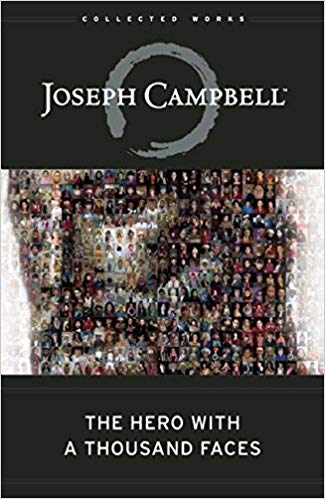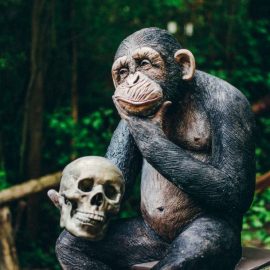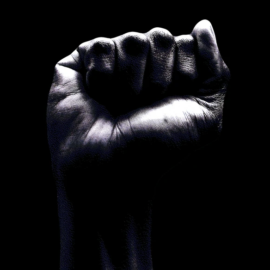

This article is an excerpt from the Shortform summary of "The Hero with a Thousand Faces" by Joseph Campbell. Shortform has the world's best summaries of books you should be reading.
Like this article? Sign up for a free trial here .
What is the cosmogonic cycle? What role does it play in Joseph Campbell’s hero’s journey?
The cosmogonic cycle is the origin story of the universe, and the means by which it will be destroyed and rebuilt. In The Hero with a Thousdand Faces, Campbell refers to the cosmogonic cycle as a macrocosm of our wake-sleep cycle.
Learn the role of the cosmogonic cycle in the hero’s journey, with examples from Jain and Hindu creation stories.
The Cosmogonic Cycle: Beginnings and Ends
Mythology is more than just a common set of story structures that are shared across cultures. The myths of the ancients also point us to our place in the cosmos, our role in the great movement of the universe. Just as the monomyth we’ve explored shows the death, birth, and transformation of the individual in the form of the hero, so does mythology show the workings of all time and space—the origin story of the universe, and the means by which it will be destroyed and rebuilt. This is the cosmogonic cycle.
The cosmogonic cycle can be seen as a macrocosm of the cycle of waking and sleep that all humans experience. First is the state of unconscious deep sleep (the primordial beginnings before the creation of time and space); then there is the conscious waking state (the living, breathing world as we know it); and finally, we have the return to the unconscious (the destruction or end of the world as we know it). We repeat this cycle for all of our days on earth, just as the cosmogonic cycle turns over and over.
The cosmogonic cycle often shows a world without end, the universal round. In a version of this cycle told among the Aztecs of pre-Columbian Mexico, each of the four elements—water, earth, air, and fire—in their turn marked the end of an age of the world: the age of water ended in a flood (flood-myths are a common feature of mythological tradition); the age of earth culminated in an earthquake; the age of air finished with destruction by wind, or hurricane; and the (present) age of fire would be brought to an end by flames.
Cosmogonic Cycle Example: The Spoked Wheel of the Jains
The Jains of the Indian subcontinent believe in a particularly demonstrative example of the cosmogonic cycle. They see time as an endless cycle, represented by a wheel with twelve spokes. Each spoke represents an age, and the spokes are divided into two sets of six. The first set is called the descending series, during which each age gets progressively worse, with the first age of pure happiness yielding gradually (over millions of years) to the succeeding ages, during which vice and sorrow become slowly mixed in and men and women become physically smaller, live shorter lives, and have declining moral values. The second set is the ascending series, during which the opposite occurs—in each succeeding age during this cycle, happiness gradually increases, people live longer, and they become more virtuous. The wheel spins and the cycle repeats endlessly.
Cosmogonic Cycle Example: The Four Ages of the Hindu Cycle
The Hindus believe in a similar cosmogonic cycle of time. The first age is marked by a long period of bliss, lasting 4,800 divine years (a divine year is equal to 360 human years). In the second age, virtue is diminished—this period lasts 3,600 divine years. The third age has virtue and vice in equal proportions, and lasts 2,400 divine years. The fourth age (which Hindus believe we are living through) is one of mounting evil, lasting 1,200 divine years. Once this age ends, there will be a doomsday of fire and flood that will cleanse the earth. After a period of nothingness and void that will last for the whole length of the four ages, the cycle will begin again.
———End of Preview———

Like what you just read? Read the rest of the world's best summary of "The Hero with a Thousand Faces" at Shortform . Learn the book's critical concepts in 20 minutes or less .
Here's what you'll find in our full The Hero with a Thousand Faces summary :
- How the Hero's Journey reappears hundreds of times in different cultures and ages
- How we attach our psychology to heroes, and how they help embolden us in our lives
- Why stories and mythology are so important, even in today's world






